Erdberger Footbridge
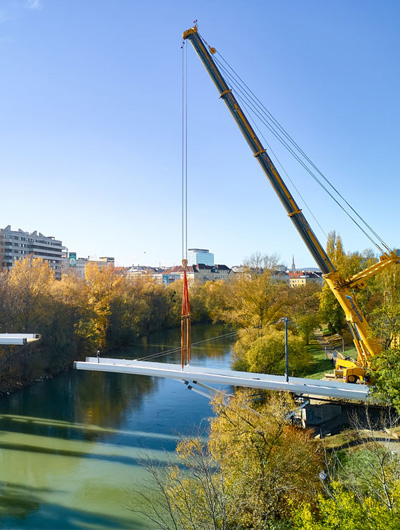
The challenge
102 metres of structural steel have replaced 84 metres of wooden footbridge
Following an inspection, it became apparent that the wooden Erdberger footbridge structure, which connects the second and third districts of Vienna, had been damaged by the effects of weather, temperature fluctuations and the penetration of moisture. The City of Vienna therefore decided to dismantle the old footbridge and replace it with a new one. The challenging lifting work was entrusted to Prangl.
Our solution
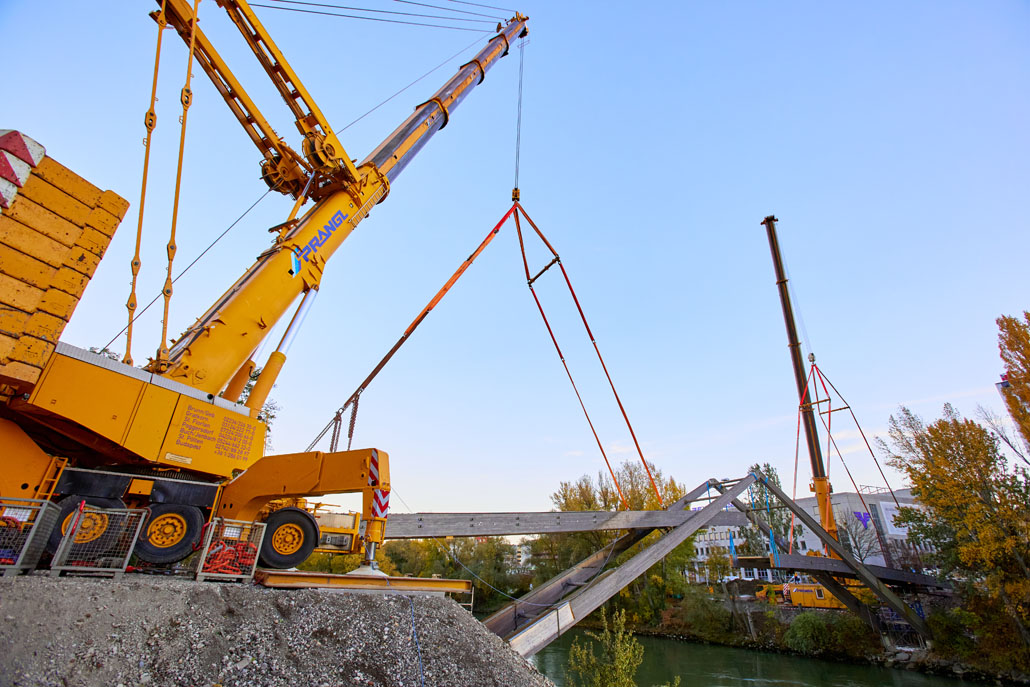
Damaged wooden footbridge
The Erdberger footbridge, which was built in 2003 on the last Danube Canal ferry crossing site, is very important to both pedestrians and cyclists. Using the nearest alternative bridges requires a considerable diversion. The decision to replace the damaged wooden structure with a new, more modern and durable steel construction met with great approval - in particular because the usable width of the footbridge was to be increased from 3.3 metres to the maximum possible width of 4.2 metres. Prangl's tried and tested quality was called upon for the footbridge replacement.
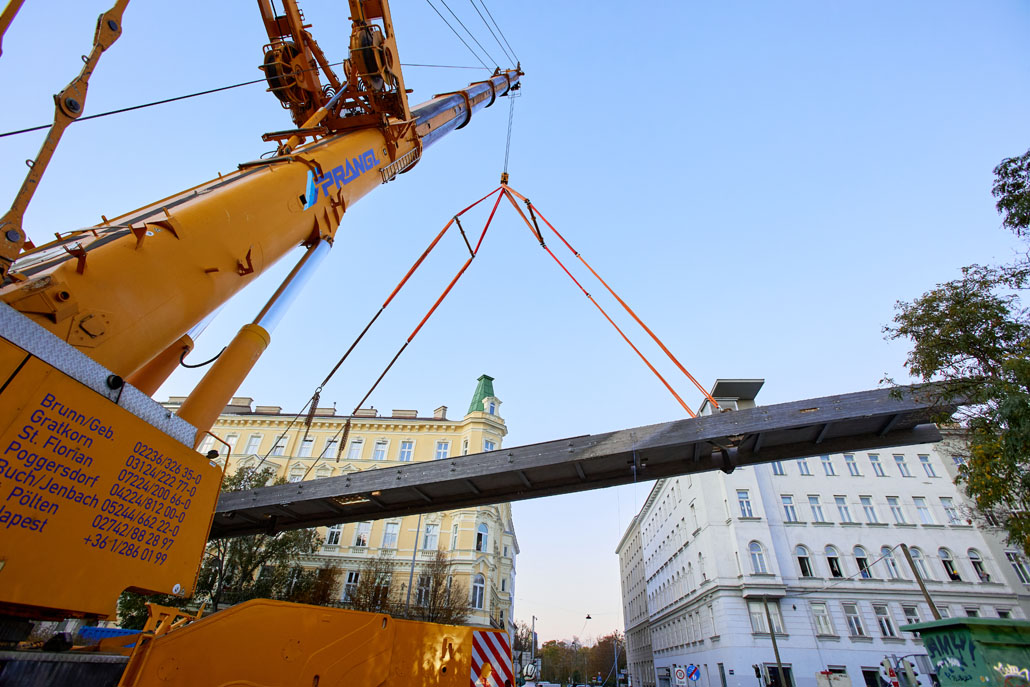
Special lifting concept
It was clear from the outset that removing the old timber elements was going to be tricky - partly due to the dimensions and weight, and also because of the asymmetrical load. The Prangl team chose two 500-tonne telescopic cranes for the main lifting tasks, positioned on each of the canal's banks. It was necessary to specially prepare the parking areas, in order to position the cranes safely. Preparation of the cranes also required a special concept: A combination of different sling types had to be used, to compensate for the lifting stroke asymmetry. Dismantling the existing structure began with the supporting structure.
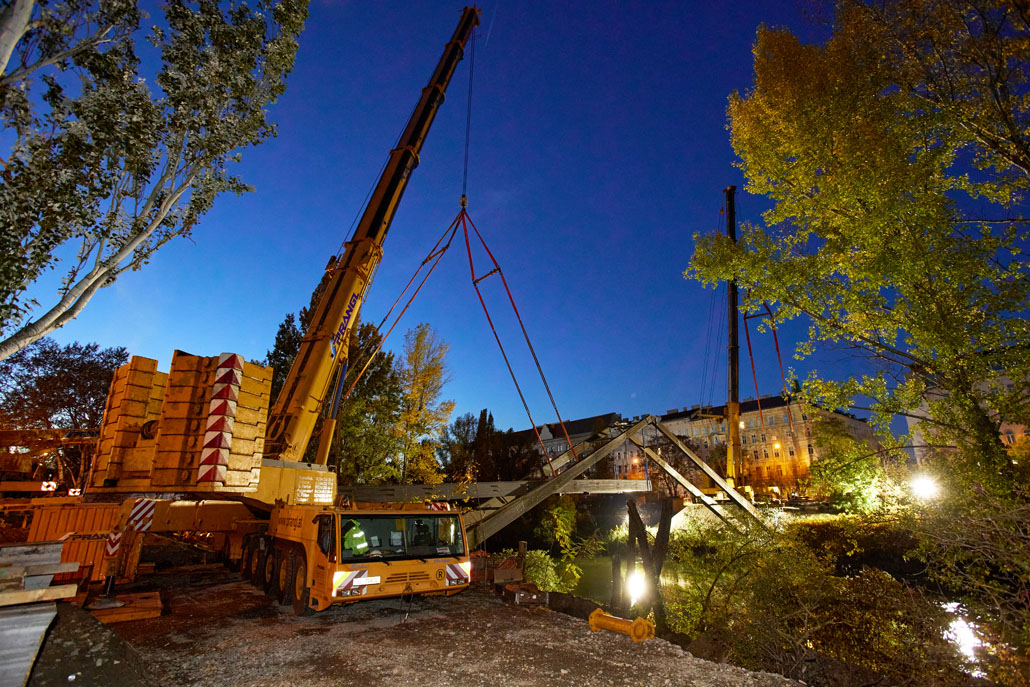
22 tonnes, 42 metres
Both cranes were required to lift out one section at a time from their position on the respective bank, whereby the cranes were each 42 metres long, 3.5 metres wide and weighed in at 22 tonnes. The supporting A-structure could then be lifted out, with the elements measuring 29 metres in length, 3.8 metres in width and weighing 13 tonnes. Lifting was by no means simple because the parts were wedged into each other due to the construction method employed, and the cranes had to perform different lifts to release the connection. A 95-tonne telescopic crane with a caged platform and a 60-tonne telescopic crane assisted the work.
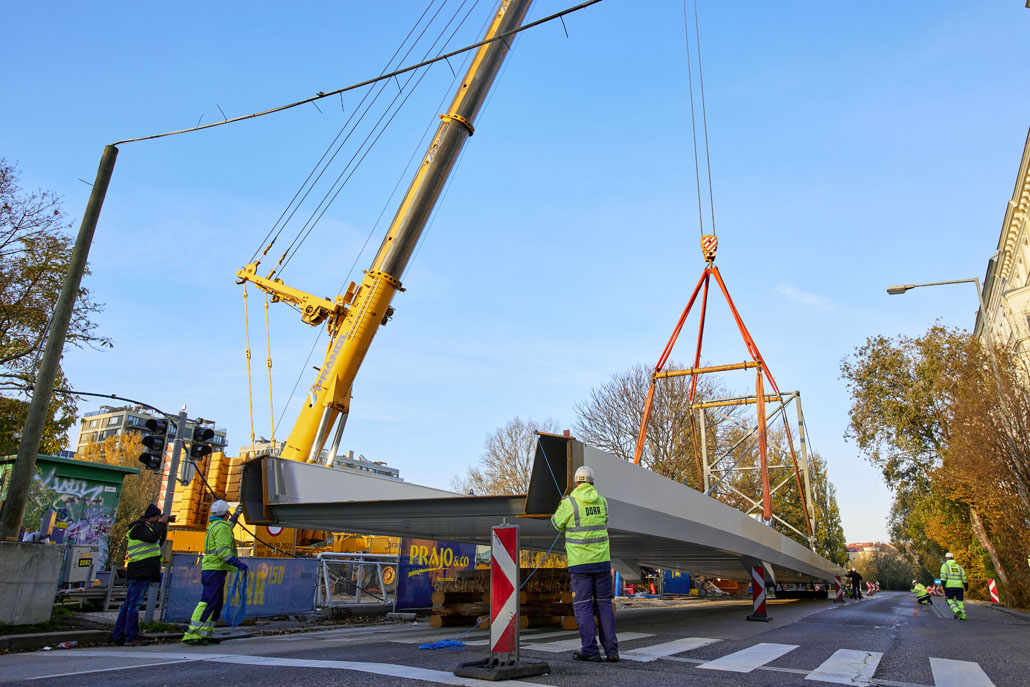
Lifting in the new steel structure
A few days later, Prangl also lifted the new steel footbridge into place. With the new structure consisting of just two components (each 51 metres long, 5.2 metres wide and weighing 70 tonnes) the large cranes on site were able to assemble the footbridge in only two lifts. Once the first part had been lifted into place, it was permanently mounted on the bank. This was followed by the second part from the opposite side. Finally, the two sections were welded in the middle. Despite the significant challenges posed by this work, the Prangl team once again effortlessly completed the task.
Services
Industry






















































